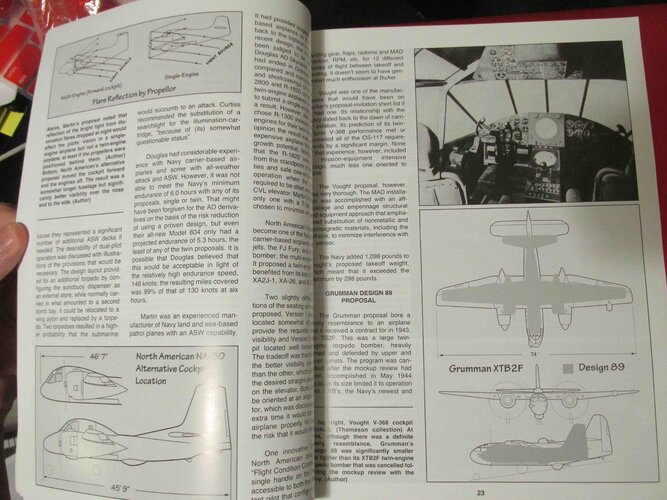archipeppe
ACCESS: Top Secret
- Joined
- 18 October 2007
- Messages
- 2,431
- Reaction score
- 3,144
Even if the XTB2F isn't the direct ancestor of the actual S-2 Tracker, they clearly share a sort of "family feeling":
Even if the XTB2F isn't the direct ancestor of the actual S-2 Tracker, they clearly share a sort of "family feeling":
Here's the overlay of the XTB2F GA, with the S-2 Tracker shown as the darker area. Source; Naval Fighters 101: Grumman S-2 Tracker Part One, Development, Testing, Variants and Foreign Users, written by this forum's own Tommy Thomason and Robert J KowalskiEven if the XTB2F isn't the direct ancestor of the actual S-2 Tracker, they clearly share a sort of "family feeling":


Solid noses and cannon were very popular in the Pacific for use against shipping.Does anyone know what the rationale of utilizing a 75mm gun in a torpedo bomber was? Was it just a desire to make it a very multi-purpose aircraft like how the TBF/TMB Avenger was often used?


Forward-firing guns on sub-hunter airplanes were to clear U-boat deck crew away from the anti-aircraft guns. Sub-hunting Sunderlands got extra forward-firing machineguns.Solid noses and cannon were very popular in the Pacific for use against shipping.
ETA: one of the B-25 variants with the 75m was used by the Navy, but I don't remember which (-25G, H, J) or the naval designation.
The 75mm they used had a nice muzzle velocity and flat trajectory. In theory, they could get rounds off from two miles out, beyond effective AA range. Did nasty work on transports, the tin cans, and smaller escorts. Easy to see why so many air forces tried it.A 75mm gun is more about poking holes in the hull near the waterline to sink it.
During WW2, the RN FAA concluded that rockets were better at blowing holes in hulls, which is why the last batch of Fairey Swordfish hung rockets under their lower wings.
The metal wing for the 3" RP was introduced on the MkII, not the Mk III, trialled in October 1942, operational by the spring of 1943, with the first U-boat kill in May. 'last batch' may give people the wrong impression of numbers and length of service for what was 1,080 Mk IIs, and 320 Mk IIIs out of 2,392 total.During WW2, the RN FAA concluded that rockets were better at blowing holes in hulls, which is why the last batch of Fairey Swordfish hung rockets under their lower wings.
WOW! Amazing. Somehow I hadn't seen these previously... Now that's some mockup! Thanks a lot for sharing.I have a few images from NARA II Record Group 72-AC-100G to share of the mock-up that will hopefully add to your understanding of the design.
